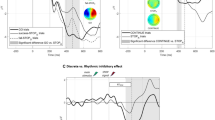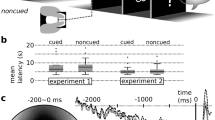Abstract
In two previous studies, the readiness potential (RP) has been reported to be influenced by the mode of movement selection. Freely selected movements were found to have a higher RP amplitude than fixed repetitive movements. This was attributed to the higher demands on planning for the performance of freely selected movements. However, movements in the free mode are distinct from movements in the fixed mode in more than one respect. For example, they are also associated with a higher degree of alteration of the side and/or the finger of movement execution and hence serial “novelty” across blocks of trials. The aim of our study was to establish whether the greater novelty of movements in the free mode could also contribute to the enhanced RP amplitude of movements in the free mode of movement selection by comparing free versus fixed movements performed in long and short sequences that differ in terms of serial novelty. The RP was recorded in 31 healthy young subjects with electrodes placed over Fz, C3, Cz, C4 and Pz. Two types of movement were studied: randomly chosen button presses with right or left index or middle finger (free mode), and repetitive pressing of a predetermined button (fixed mode). We found that: (1) in confirmation of previous studies, the amplitude of the RP was higher for freely selected than free movements; (2) the effect of the mode of movement selection was present over central electrodes but was most pronounced for parietal electrode Pz, with movements in the free mode showing the earliest and greatest increase in negativity at this site; (3) this parietally enhanced negativity in free compared with the fixed mode was absent after the subjects had performed a block of long movement sequences, suggesting that serial novelty of movements also contributed to the effect of mode on the RP amplitude; (4) both the latency and the magnitude of the lateralized readiness potential (LRP) were altered by the mode of movement selection. Movements in the free mode showed an earlier onset of the LRP, which had a higher peak than the LRP prior to movements in the fixed mode. This effect was mainly due to an increased amplitude of the RP over the electrode contralateral to the side of movement prior to freely selected movements. These findings are discussed in relation to previous RP and positron emission tomography studies.
Similar content being viewed by others
Author information
Authors and Affiliations
Additional information
Received: 9 April 1997 / Accepted: 3 November 1997
Rights and permissions
About this article
Cite this article
Dirnberger, G., Fickel, U., Lindinger, G. et al. The mode of movement selection Movement-related cortical potentials prior to freely selected and repetitive movements. Exp Brain Res 120, 263–272 (1998). https://doi.org/10.1007/s002210050400
Issue Date:
DOI: https://doi.org/10.1007/s002210050400




